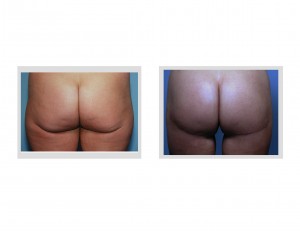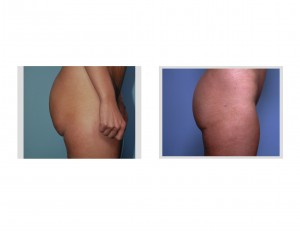Background: Buttock enhancement surgery has become a primary method of body contouring plastic surgery. Having a shapely and fuller buttocks has taken on great signficance for a more attractive body form. The buttocks for some now rivals what has been the breasts for many in the past. While most of the notoriety belongs to the Brazilian Butt Lift, a method of buttock augmentation by autologous fat injections, there are other buttock rehaping surgery techniques.
The oldest buttock reshaping surgery is the original buttock lift. Unlike the Brazilian Butt Lift, which really doesn’t lift the buttocks but fills it out, the lower buttock lift really does. By removing skin and fat from the bottom of the buttocks, a reshaping will occur with a more defined buttock-thigh demarcation/crease. The lower end of the buttocks will be tucked up and will be a little rounder.
A lower buttock lift still has a valuable role to play in buttock reshaping for correcting several problems that fat injections can not improve. The ‘banana peel’ deformity is one such problem where a roll of buttock tissue overhangs the existing lower buttock crease. It is also effective for a buttock crease that is too low and ill-defined which creates a vertically long buttock shape. Lastly for buttock asymmetry that is caused by different levels of the lower folds, a lower buttock lift can correct the location of the fold and also creare better symmetry in the buttock shapes.
Case Studies: This 34 year-old female wanted to improve the sagging appearance of her buttocks. While she was not overweight nor had lost any significant weight, her buttocks had always had a roll of skin that ‘fell over the lower buttock crease’ that could not be improved by exercise or any non-surgical skin tightening techniques.



Case Highlights:
1) The sagging buttocks is when the edge of the lower buttocks falls over the lower buttock/thigh crease, creating an overhang. The lower end of the buttocks may also have little shape and be positioned too low.
2) The lower buttock lift removes the overhanging buttock tissue and creates a new and more defined buttock crease.
3) The lower buttock lift also tightens the lower pole of the buttock and creastes a deeper buttock fold/crease.
Dr. Barry Eppley
Indianapolis, Indiana


